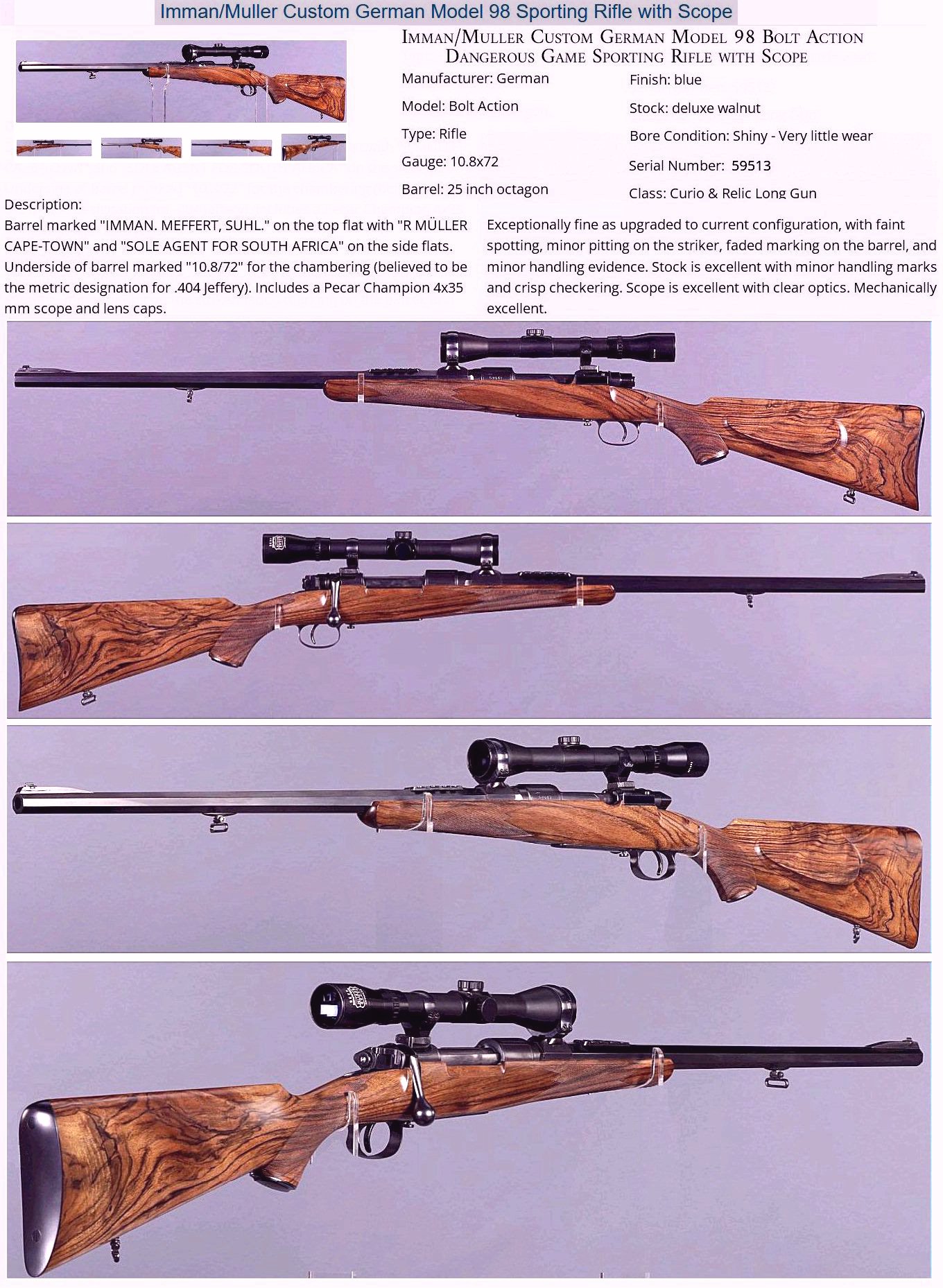I bought an unknown - not sure what the caliber is - any suggestions?
Hello all,
When this one came up for auction last month I couldn't resist placing a bid, just to see high it would go.
Apparently my "watching bid" was too high, because I ended up as the winner. I sure hope it turns out to
be a 404 Jeffery as described.
However, I know the German metric designation for the 404J is 10.75x73. This was listed as 10.8x72.
So I'm not sure what the caliber might be. Any suggestions would be welcome.
The fabulous stock was a big attraction. Regardless, this looks to be a keeper. I can't wait to get it in hand.
http://www.buckstix.com/buckpics/imman-0.jpg

Hello all,
When this one came up for auction last month I couldn't resist placing a bid, just to see high it would go.
Apparently my "watching bid" was too high, because I ended up as the winner. I sure hope it turns out to
be a 404 Jeffery as described.
However, I know the German metric designation for the 404J is 10.75x73. This was listed as 10.8x72.
So I'm not sure what the caliber might be. Any suggestions would be welcome.
The fabulous stock was a big attraction. Regardless, this looks to be a keeper. I can't wait to get it in hand.
http://www.buckstix.com/buckpics/imman-0.jpg



Comment